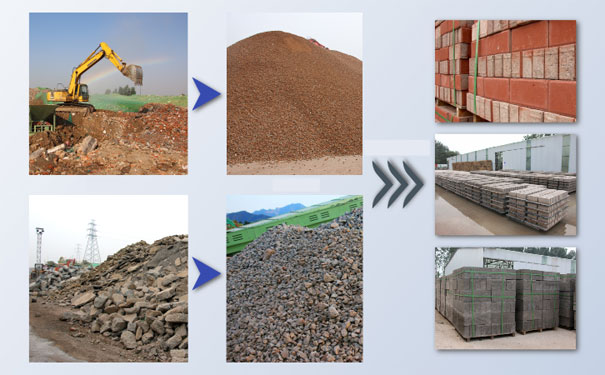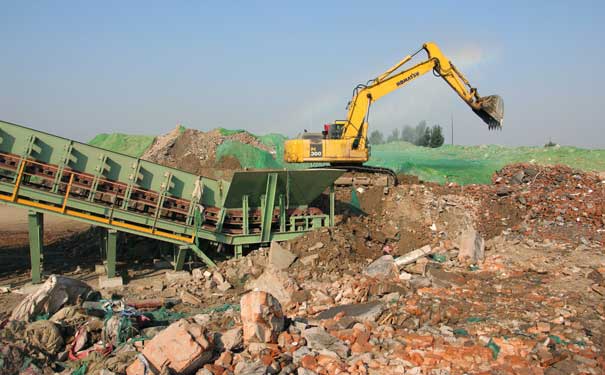Treatment method of construction waste treatment equipment:
1. After sorting, removing or crushing many wastes in construction waste, most of them can be reused as renewable resources, such as: scrap steel bars, scrap iron wires, scrap wires and various scrap steel accessories and other metals, which are sorted, concentrated, and re-used. After reheating, it can be processed into various specifications of steel;
2. Waste bamboo wood can be used to make artificial wood;
3. After being crushed, waste materials such as bricks, stones, and concrete can be used in place of sand for masonry mortar, plastering mortar, concrete bedding, etc., and can also be used to make building blocks, paving bricks, lattice bricks and other building materials products.
Working principle of construction waste crusher:
Driven by the motor, the rotor rotates at a high speed, and the construction waste enters the first crushing chamber to collide with the rotor's plate hammer, and then enter the second crushing chamber to be crushed. In the crushing process, not only the impact and crushing between the construction waste and the hammer and the liner is formed, but also the stone beating and stone shaping in each hammer room and the crushing cavity is completed, and finally discharged from the discharge port. The mobile crushing station is good equipment for processing construction waste. It can crush construction waste and then regenerate construction materials through sand making, which is very environmentally friendly.
Wheeled mobile crushing station, also known as semi-mobile crushing station, is a rock and construction waste crushing equipment, which greatly expands the concept of coarse crushing and fine crushing. Its design philosophy is to stand from the customer's standpoint, and to eliminate the obstacles that the crushing site, environment, complex basic configuration and complex logistics bring to the customer's crushing operation, as the primary solution.



